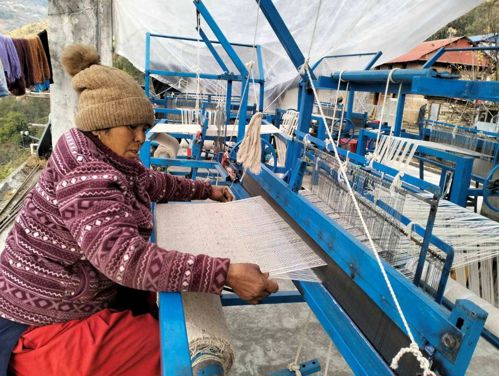Financial sustainability from shared ownership

Participants of the training winding Allo threads into skeins, in GCA, Alampu. Credit - Yangti Sherpa / National Trust for Nature Conservation - Gaurishankar Conservation Area Project (NTNC-GCAP).
Innovative partnerships for sustainable conservation in Gaurishankar Conservation Area, Nepal
The Gaurishankar Conservation Area serves as a biological corridor between two very important protected areas - Langtang and Sagarmatha National Parks in Nepal. Since 19 July 2010, National Trust for Nature Conservation, an autonomous and non-profit organisation, has been managing the Gaurishankar Conservation Area through the Gaurishankar Conservation Area Project (GCAP).
GCAP has been managing the protected area primarily through a community-based conservation approach. Twenty-two locally formed Conservation Area Management Committees (CAMCs) work in the field level as local stakeholders and conservation partners of GCAP, which has not only fostered the feeling of ownership and responsibility among the locals, but has also helped the project to conserve biodiversity sustainably and address human development challenges. For sustainable results, GCAP highly values local stakeholder contribution and encourages their involvement. This symbiotic relation between the GCAP and locals has resulted in a win-win situation.
Similarly, in the case of the project ‘Conserving Biodiversity through Community Engagement in Gaurishankar Conservation Area, Nepal’ we have been collaborating with local government along with public and private sectors, in closing the biodiversity financing gap while leaving a legacy of resilience.
Mobilising diverse funding sources
Predator proof corrals have proven to be one of the most effective measures in reducing livestock depredation, mitigating human-wildlife conflict. By combining the Darwin Initiative grant with National Trust for Nature Conservation’s in country resources - CAMC’s internal fund and locals’ in kind cooperation - GCAP has been able to support 124 predator proof corrals in the last project year (2024 – 2025) alone, exceeding the planned target by 24%.
The adoption of predator proof corrals in high-conflict areas of Gaurishankar Conservation Area generated a positive spillover effect, with surrounding communities increasingly implementing the approach. The idea and design of these corrals was so well received that an additional ten households adopted it with the financial contribution of CAMC alone. The pattern of innovation-adoption is expected to build long-term resilience among locals and encourage human-wildlife coexistence even after the project period.

Roping in sectors for nature-positive outcomes
The project’s partnerships with local stakeholders extended to multipurpose nurseries and ecotourism trail construction and restoration. GCAP has also tried to link hydropower companies with community-managed multipurpose nurseries to supply saplings for ecological restoration. Hydropower companies are required to carry out plantation activities on barren land to compensate for the land used in infrastructure construction, thereby generating income for the involved farmer groups.
Likewise, the project has attracted private investment in tourism by developing eco-tourism trails, training local youth to work as nature guides, and supporting local households in establishing homestay facilities for the visitors. These initiatives will not only diversify household income but also create incentives for communities to steward biodiversity conservation as economic assets.
Roles of women in conservation is of paramount importance, and the economic empowerment of women has always been a focus of GCAP. With the help of this project, 11 women were trained for 45 days to produce Allo fabric (plant-based fabric) and how to use it to make bags and handicrafts. Additionally, 50 households were supported for organic farming, ‘sowing the seeds’ of green enterprise development. These enterprises, partly financed through CAMC’s cost-sharing and local government cooperation, are expanding opportunities for women and marginalised groups who were previously excluded from conservation decision-making.
Lessons in building sustainable conservation finance
One clear lesson is that financial sustainability depends on shared ownership. For example, predator proof corrals were only possible because families contributed labour, lowering construction costs while deepening local commitment. Similarly, eco-tourism initiatives benefited from partnerships with CAMC, which co-invested in eco-trails and other infrastructure. By blending grants with the contributions of CAMCs and local government, as well as in-kind community investment, this project has ensured that activities are seen not as externally imposed, but locally owned and scalable.
Written by Prawesh Poudel. For more information on this Darwin Initiative Main project 30-026, led by National Trust for Nature Conservation, please click here.


 Back
Back